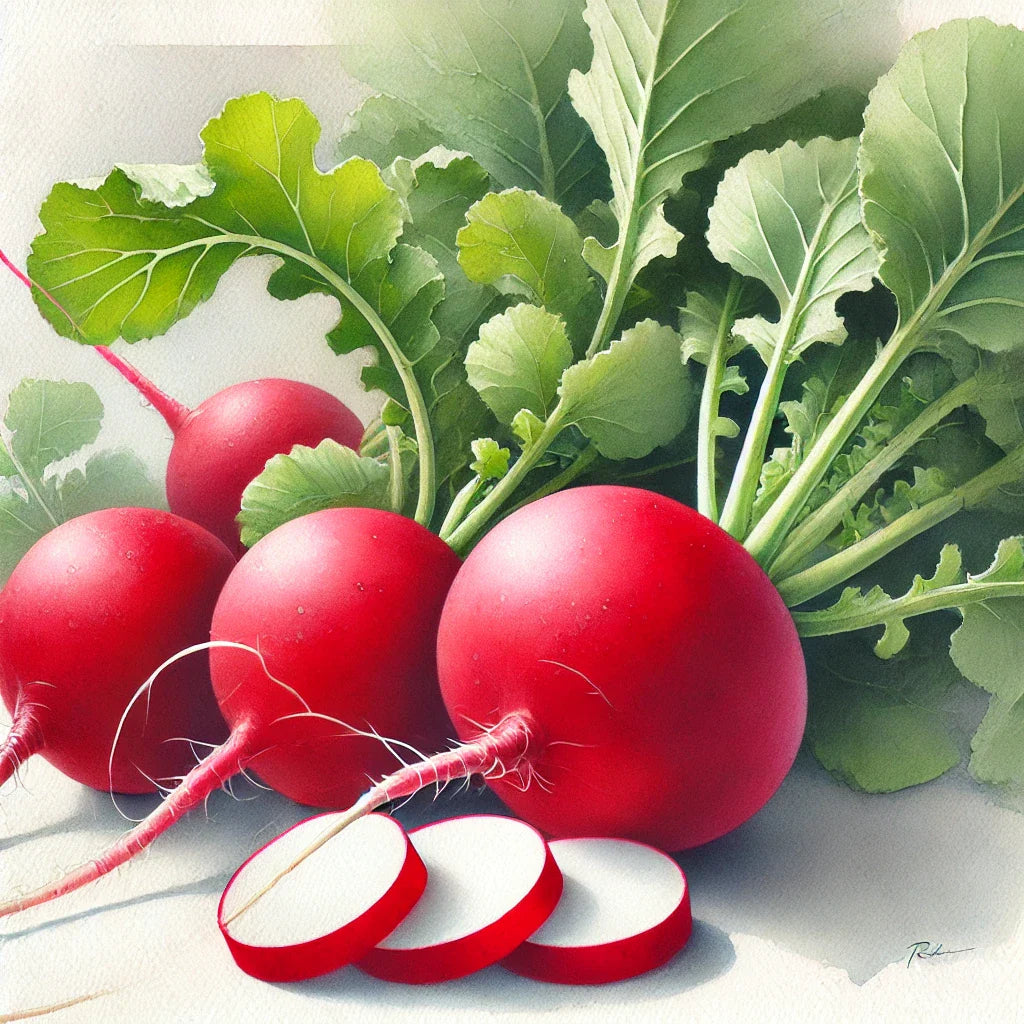
How to Grow and Save Radish Seeds (With a Side of Humor)
Radishes: the crunchy, peppery little underdogs of the vegetable world. They’re quick to grow, easy to manage, and require so little effort that even the most forgetful gardener can succeed. Plus, they make your salads look fancy, and who doesn’t want that?
How to Grow Radishes
Time of Planting
Radishes love to be early risers. Plant them as soon as the soil is workable in early to mid-spring, and again in early fall if you want a second round. Want a steady supply? Plant every 3-4 weeks and enjoy a near-endless harvest of these spicy little root veggies.
Spacing Requirements
Sow seeds about ½ inch deep (or as deep as your patience allows) in rows spaced 2-3 inches apart. If you want to grow radishes for seed instead of just eating them, give them more breathing room: 4-6 inches apart for annuals, 12-18 inches apart for biennials.
Time to Germination
Radishes sprout in a flash! Expect to see tiny green shoots within 3-12 days. It’s almost like they enjoy growing as much as you enjoy eating them.
Special Considerations
Thinking about saving seeds? Be aware that radishes are a bit too friendly and will cross-pollinate with other radish varieties, including their wild cousins. Unless you want surprise hybrid radishes, keep different varieties separated by 800 feet to ½ mile (or just hand-pollinate them like a dedicated veggie matchmaker).
Common Pests and Diseases
Like all great things, radishes come with a few challenges. Their biggest enemies? Flea beetles, cabbage flies, and slugs. If your radishes look like they’ve been shot with a tiny BB gun, blame flea beetles. Slug damage? That’s a late-night garden snack gone wrong. Try row covers, companion planting, and keeping the garden tidy to discourage these unwelcome visitors.
When and How to Harvest for Food Consumption
Radishes are overachievers—they mature fast! Some varieties are ready for harvesting in as little as a month. When the leaves hit about 6 inches tall, grab the base of the stem and gently pull. Voilà! Your crunchy, peppery treat is ready.
Eating
Radishes are often seen in salads, but don’t let that limit you! Roast them, pickle them, toss them in tacos, or eat them straight out of the garden like an earthy, spicy apple.
Storing
Not ready to eat them all at once? Radishes store well in the fridge for about a week—but let’s be real, you’ll probably munch through them faster than that.
How to Save Radish Seeds
Saving radish seeds takes patience, but the reward is a nearly infinite supply of these zesty roots. Just make sure you’re keeping varieties separate—unless you’re up for a radish science experiment.
Life Cycle
Radishes can be either annual (seed in one season) or biennial (seed in their second season). If you’re growing biennials, be prepared to wait until next year for your seed bounty.
Recommended Population Sizes
For viable seeds, save from at least 5 plants. Want long-term genetic stability? Aim for 20-50 plants. If you’re saving seeds for a rare variety, go big and save from 80 plants or more.
Assessing Seed Maturity
Radish pods won’t shatter like some seeds do, so you can leave them in the field until they turn brown and brittle—usually between early and late summer. If you’re hearing a satisfying crunch when you touch them, they’re ready!
Harvesting
Either cut mature seed stalks individually or go for the dramatic approach and harvest all at once when two-thirds of the planting is mature. Don’t let them sit too long, or seed quality might suffer.
Once harvested, lay stalks out on a row cover or landscape fabric in a sheltered spot to dry. Usually, 1-5 days does the trick.
Cleaning and Processing Seeds
Radish seeds are stubborn little things and won’t pop out easily. Here’s where things get fun:
- Small-scale method: Place harvested plants on a tarp or in a bucket and stomp around like you’re crushing grapes for wine.
- Large-scale method: Sandwich plants between two tarps and drive over them with a car. Yes, really. Just make sure your neighbors don’t call the authorities.
If the seeds are still clinging on for dear life, try soaking them for a few hours to loosen the pulp. Then, rinse and dry them thoroughly.
Storage and Viability
When stored under cool, dry conditions, radish seeds can remain viable for up to six years. Just pop them into an airtight container, store them somewhere dark, and try not to forget about them until the next planting season rolls around.
Final Thoughts
Radishes are the perfect crop for impatient gardeners. They’re fast, low-maintenance, and they give you the satisfaction of homegrown goodness without making you wait half a year. Plus, saving their seeds means you’ll have radishes for years to come—whether you like them spicy, mild, or somewhere in between.
So go forth, plant those seeds, and enjoy the radishy rewards!
